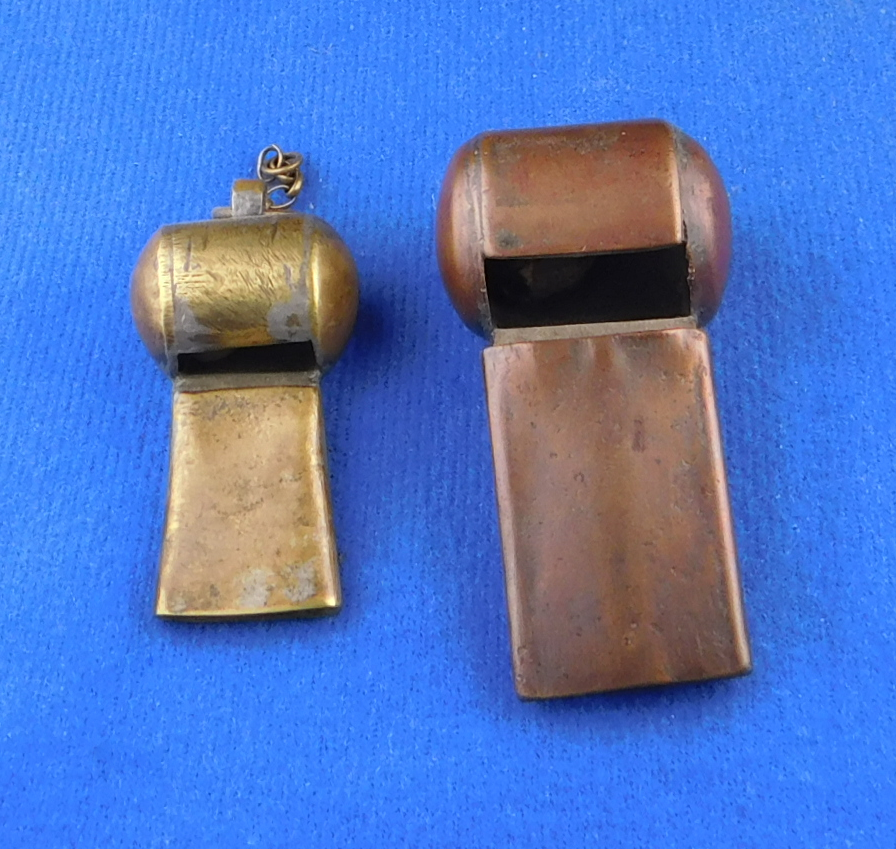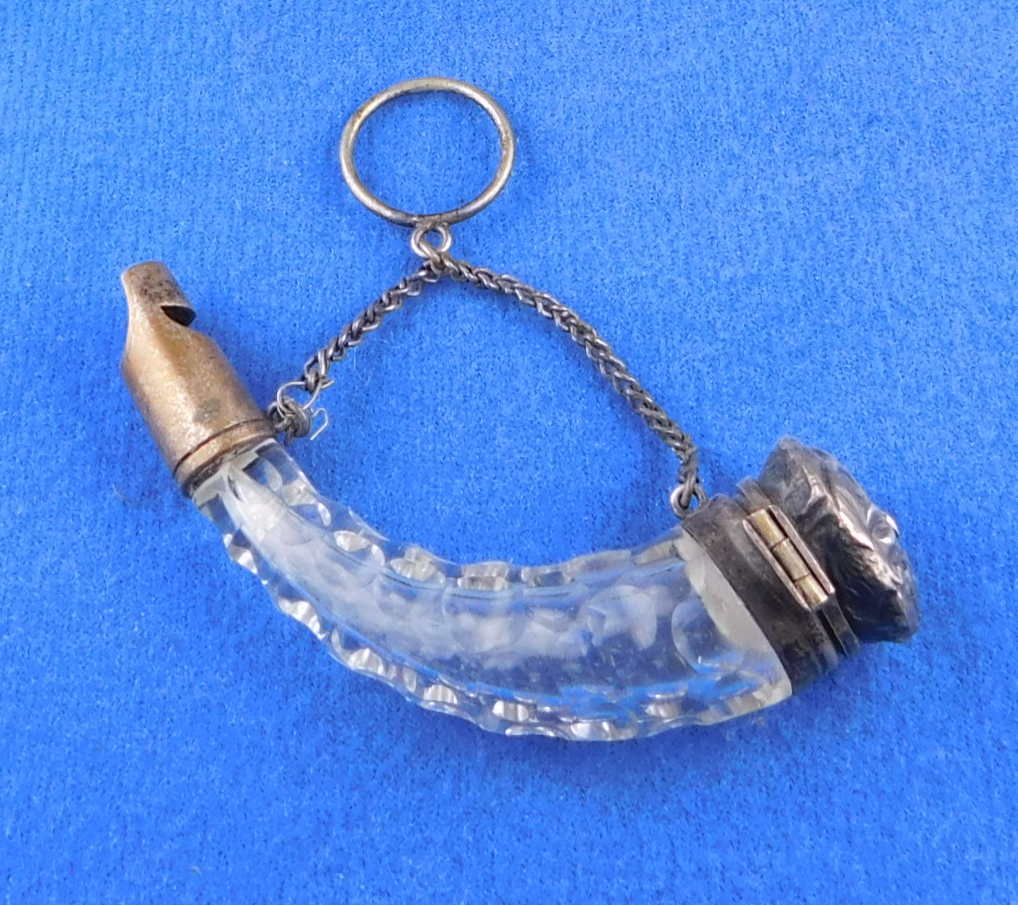Spotlight > Whistle Categories > Variety > 122
Whistory
Mental asylums have a long and dark history. Perhaps that is why asylum stamped whistles have a certain amount of peculiar attraction. Although asylums date back as far as the 5th century in the middle east, they have ranged throughout many countries, existing more as prisons and experimental facilities than anything else; a way to segregate what no one wanted to deal with.
Science Museum states: Large Victorian public asylums haunt the history of psychiatry. They were hailed as places of refuge for some of society’s supposedly most vulnerable men and women. These buildings were called ‘lunatic asylums’, and later renamed ‘mental hospitals’. They earned a reputation as dehumanizing, prison-like institutions.
Staff eventually were equipped with whistles. It appears that, of the many whistle manufacturers in the UK during the time of these institutions, it was primarily Hudson’s that manufactured stamped whistles for individual facilities. It was not until the early 1880s that they emerged with a large police whistle contract ( circa 1883-4 ) and yet very early in Hudson history did they start cashing in on the cloning of the Metropolitan whistle design.
Hudson’s company was established 1883 ( although James and Joseph were making whistles for years previous to this date, possibly a full decade ) and issued asylum whistles within a short time with the registered name Metropolitan, initially with Registered stamped on the whistle below Metropolitan, so that certain whistles began to target institutions by name.
Except for one whistle probably by Dowler, no other manufacturers are known as of this writing to have manufactured whistles for specific asylums. The Dowler whistle is exceptional in that it was made to Hiatt’s patent for constabularies and stamped as such, yet issued for Brookwood Asylum. It sold for nearly 1500 dollars on auction. The picture is presented in this SPOTLIGHT by permission of the seller.
Further research reveals in the book Collecting Police Whistles by Martyn Gilchrist and Simon Topman pages 116 through 144 lists only 17 stamps in the back of the book for known issued stamps from historic records at Hudson’s. Yet there are currently known in collections at least 25 different stamps and more emerging each year. Martyn Gilchrist is a researcher and collector, and Simon Topman is CEO of Hudson Whistle Co. It appears that it was a practice to purchase one’s own stamp and order generic whistles, stamping one’s own facility name.
There are listed over 100 asylums in the UK and many others in other countries. Although whistles may have been in use in a generic fashion, collectors strive to locate specific names to institutions. A list has been made from CPWs research and presented here of Asylum whistles of Great Britain. A list has also been made of known Asylum whistles with pictures included. There are also somewhat associated stamps listed, such as reformatory, hospital and sanatorium for reference purposes.
Whistology
| Terms | Definition |
|---|---|
| Asylum | an institution offering shelter and support to people who are mentally ill |
| Lunatic | a mentally ill person |
| Madhouse | a psychiatric hospital |
| Insane | in a state of mind which prevents normal perception, behavior, or social interaction; seriously mentally ill |
| Mental Hospital | an institution where patients with psychiatric disorders live while receiving treatment |
| Bedlam | in London, England, the Priory of Saint Mary of Bethlehem, which later became known more notoriously as Bedlam, was founded in 1247 |
| Hospital Sanatorium | an establishment for the medical treatment of people who are convalescing or have a chronic illness |
Stamps Used on Asylum Whistles:
- asylum
- lunatic
- mental hospital
Models:
- Tube shaped, two windows Porteous top, cast mouthpiece 1883 – 1886
- Tube shaped, two windows Porteous top, machined, rolled mouthpiece 1886 to 1908 ??
- Tube shaped, two windows with cast top, cast mouthpiece 1883-1886
- Tube shaped, two windows with cast top, machined, rolled mouthpiece 1886 to 1908
- Tube shaped, two windows with two piece top and machined 1908 to 1922 ??
- Escargot/beaufort combination ( Hiatt’s patent) circa 1895 ??
- Beaufort with top cap circa 1895 ??
HUDSON STAMPS:
– page 118 to 142 Collecting Police Whistles and Similar Types, Gilchrist & Topman
- Asylum (associated stamp)
- Ballinasloe asylum – verified
- Ballinasloe Mental Hospital – verified
- Berkshire Mental Hospital ( AKA Broadmoor ) – verified
- Brentry Reformatory – verified
- Cane Hill Asylum – verified
- East Riding Asylum Beverley – verified
- Gloucester Mental Hospital – verified
- Hospital (associated stamp)
- Kent Asylum Barming Heath – verified
- Mental Hospital (associated stamp)
- Middlesex County Asylum – verified
- Peckham House – not verified
- Reformatory (generic stamp)
- Royal India Asylum – verified
- Rubery Hill Asylum – verified
- Rubery Hill Mental Asylum – verified
- Sanatorium (associated stamp)
- Three Counties Asylum – verified
- West Riding Asylum Wakefield – verified
Dowler Stamp ( Hiatt’s patent ) — constabulary
- Brookwood Asylum
| Known Stamped Whistles | |
|---|---|
| Argyle and Bute 1884 | pictured, credit needed |
| Abington Asylum 1886 – 1889 | pictured, credit needed |
| Ballinasloe Mental Hospital 1908 –1922 | pictured, Leif Bailey |
| Birmingham City Asylum ( beaufort ) **1902 – 1907 | pictured, The Whistle Gallery |
| Brentry Reformatory Bristol 1886 – 1889 | pictured, Adrian Leach |
| Brookwood Asylum ( Dowler Hiatt ) 1894 – 1907 | pictured, with permission |
| Bucks County Asylum – Porteous 1898 – 1907 | pictured, credit needed |
| Cane Hill Asylum ( James Hudson mouthpiece) 1886 – 1889 | pictured, Leif Bailey |
| Croydon Mental Hospital – Porteous 1898 – 1907 | pictured, credit needed |
| East Riding asylum Beverley 1908 – 1922 | pictured, Leif Bailey |
| Gateshead Asylum Stannington Porteous 1884 – 1886 | pictured, Gary Paterson |
| Gateshead Mental Hospital 1923 onward | pictured, credit needed |
| Hollymoor Mental Hospital Porteous circa 1900 | pictured, Leif Bailey |
| Kent Asylum Barming Heath 1883 – 1884 | pictured, Adrian Leach |
| Kent Asylum Barming Heath 1908 – 1922 | pictured, credit needed |
| KCMH BH Kent County Mental Asylum Barming Heath 1923 – ? | pictured, Leif Bailey |
| Notts County Asylum 1889 – 1907 | pictured, Adrian Leach |
| Laverstock House Asylum REGISTERED 1883 – 4 | pictured, Adrian Leach |
| London County Asylum 1886 – 1889 | pictured, Adrian Leach |
| Middlesex County Asylum 1889 – 1907 | pictured, Adrian Leach |
| Middlesex County Asylum 1886 – 1889 | pictured, Adrian Leach |
| Peckham House – not stamped Asylum, Porteous | pictured, credit needed |
| Royal India Asylum 1886 – 1889 | pictured, credit needed |
| Springfield Mental Hospital *1918 – ?? | pictured, credit needed |
| Three Counties Asylum – Registered 1883 – 4 | pictured, Leif Bailey |
| Three County Asylum 1898 – 1907 | pictured, Leif Bailey |
| Three Counties Asylum 1889 – 1907 | pictured, Matt Rose |
| Warminster Psychiatric Hospital | not pictured |
| West Riding Asylum 1908 – 1922 | pictured, Adrian Leach |
| Wilts County Asylum 1886 – 1889 | pictured, Adrian Leach |
| Mental Hospital Winson Green circa 1923 onward | pictured, Science Museum, London |
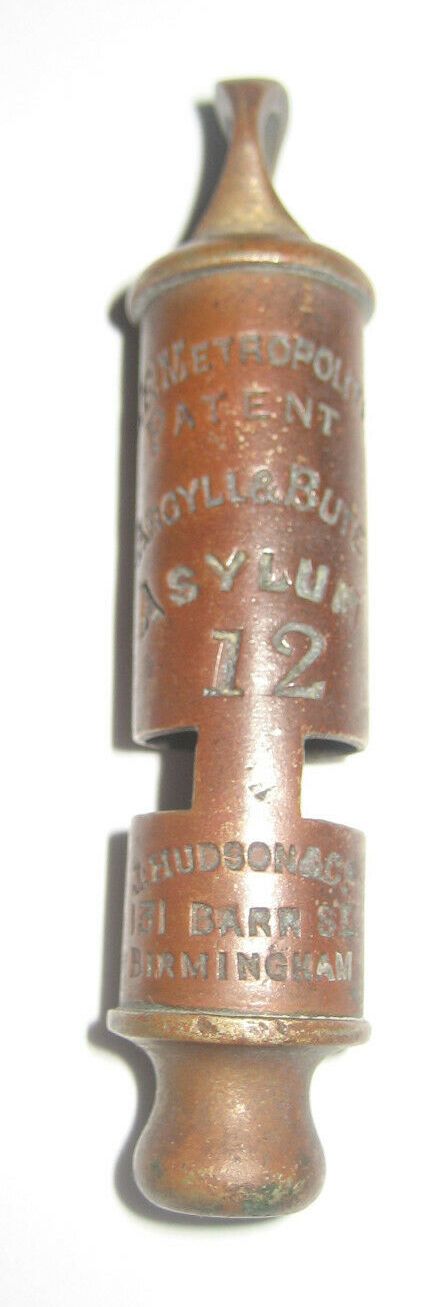
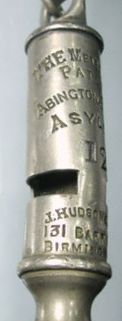
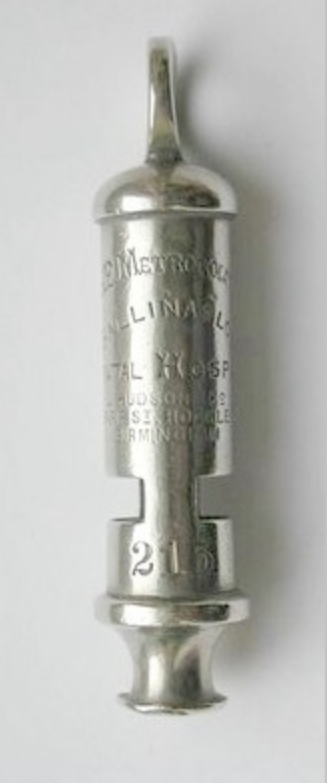
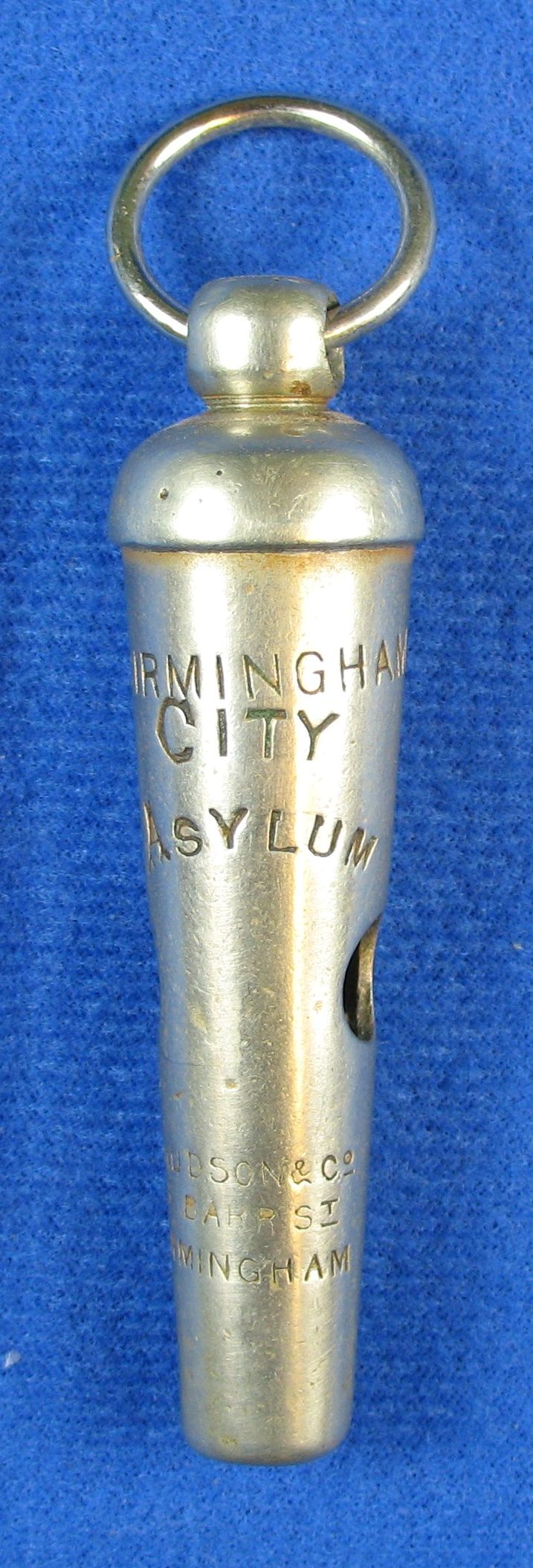

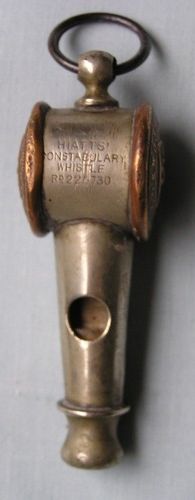
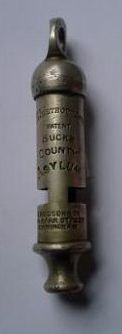
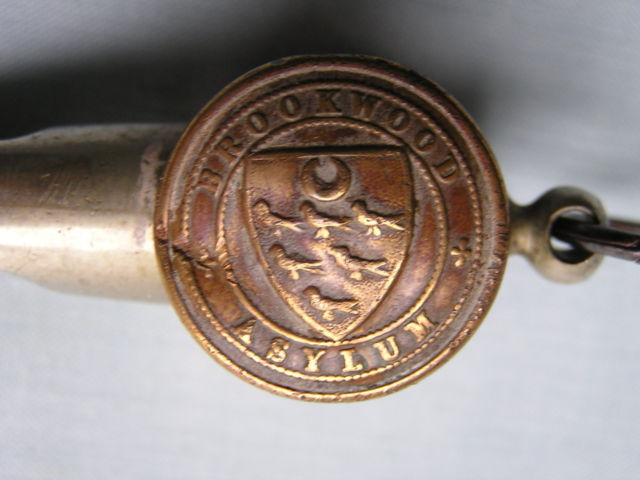
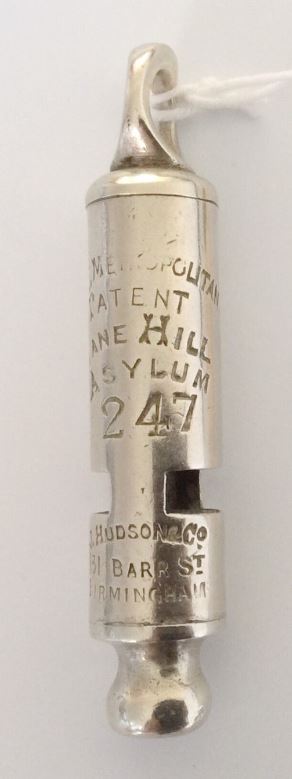
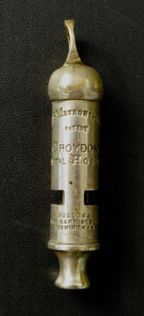
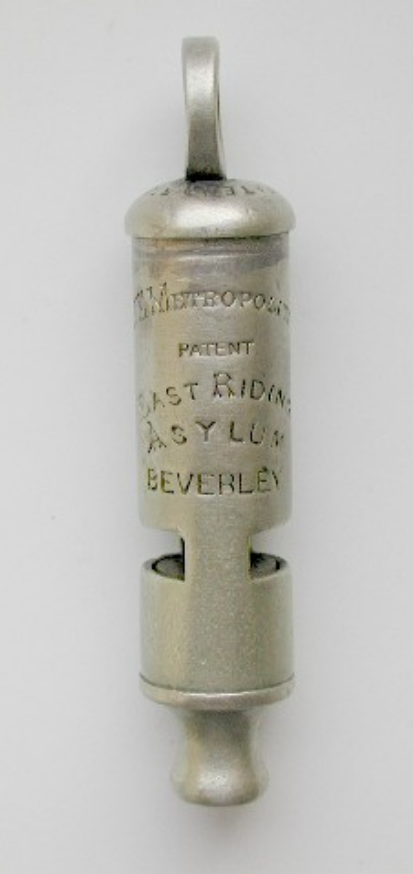
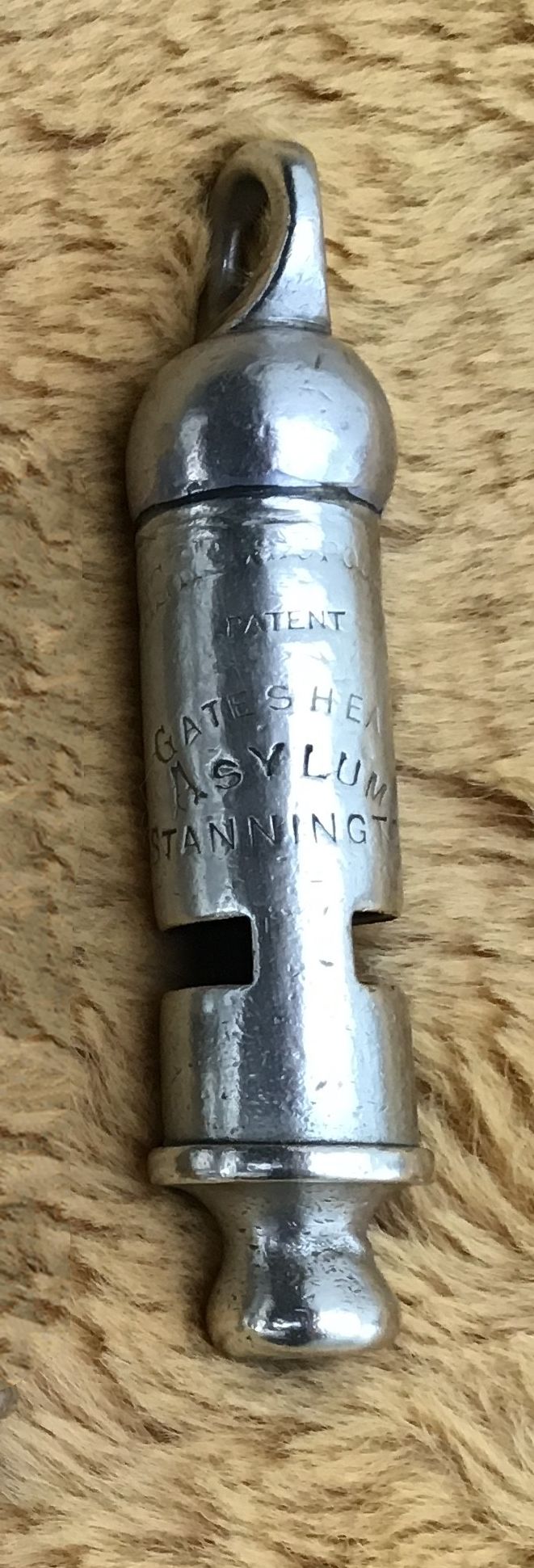
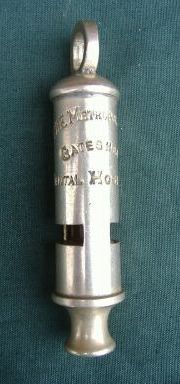
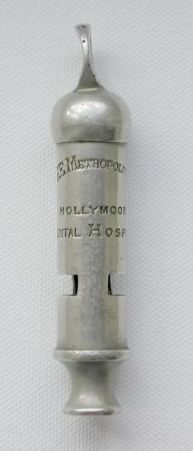

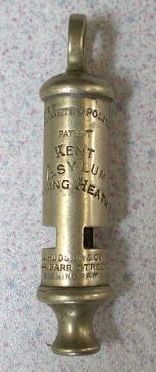
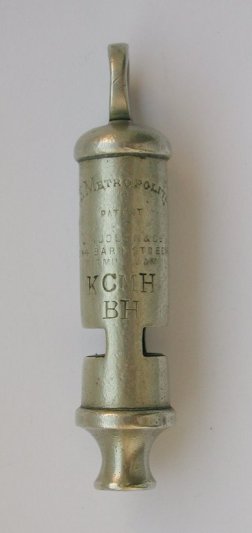

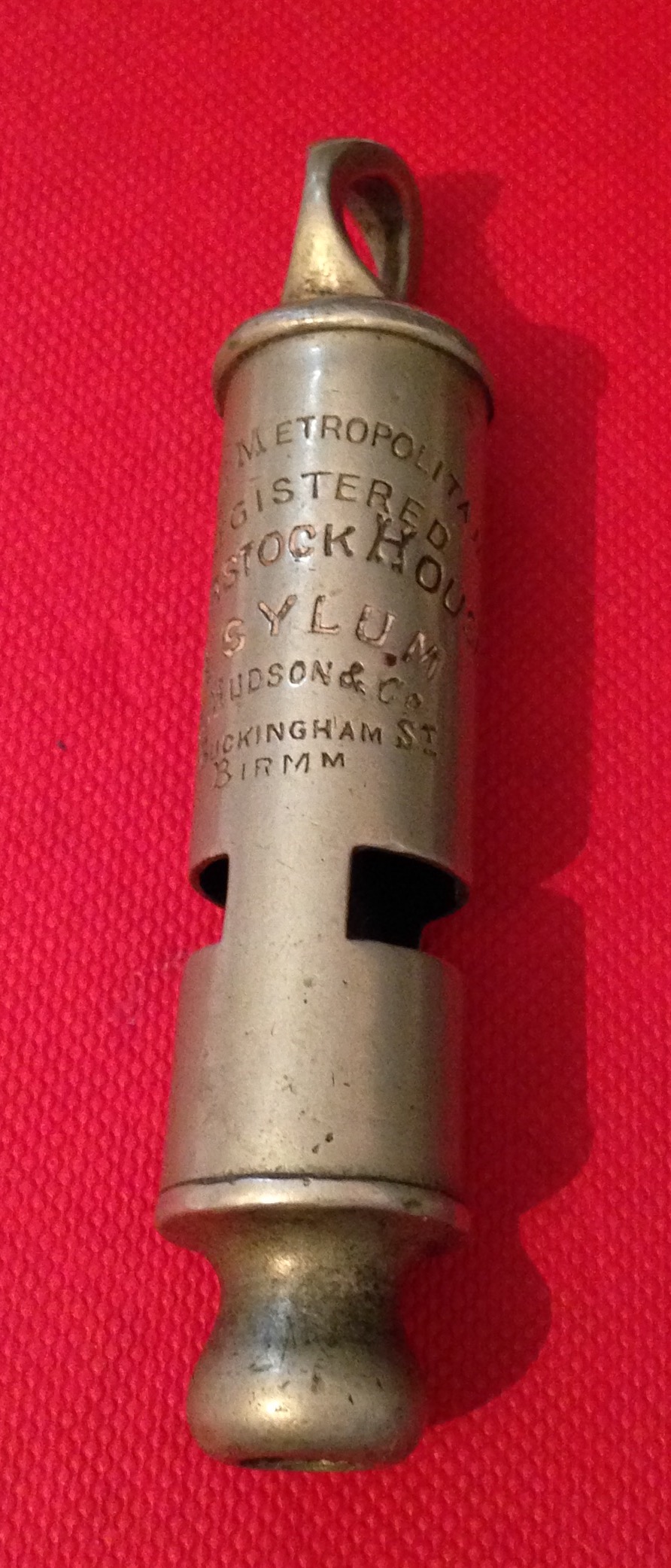
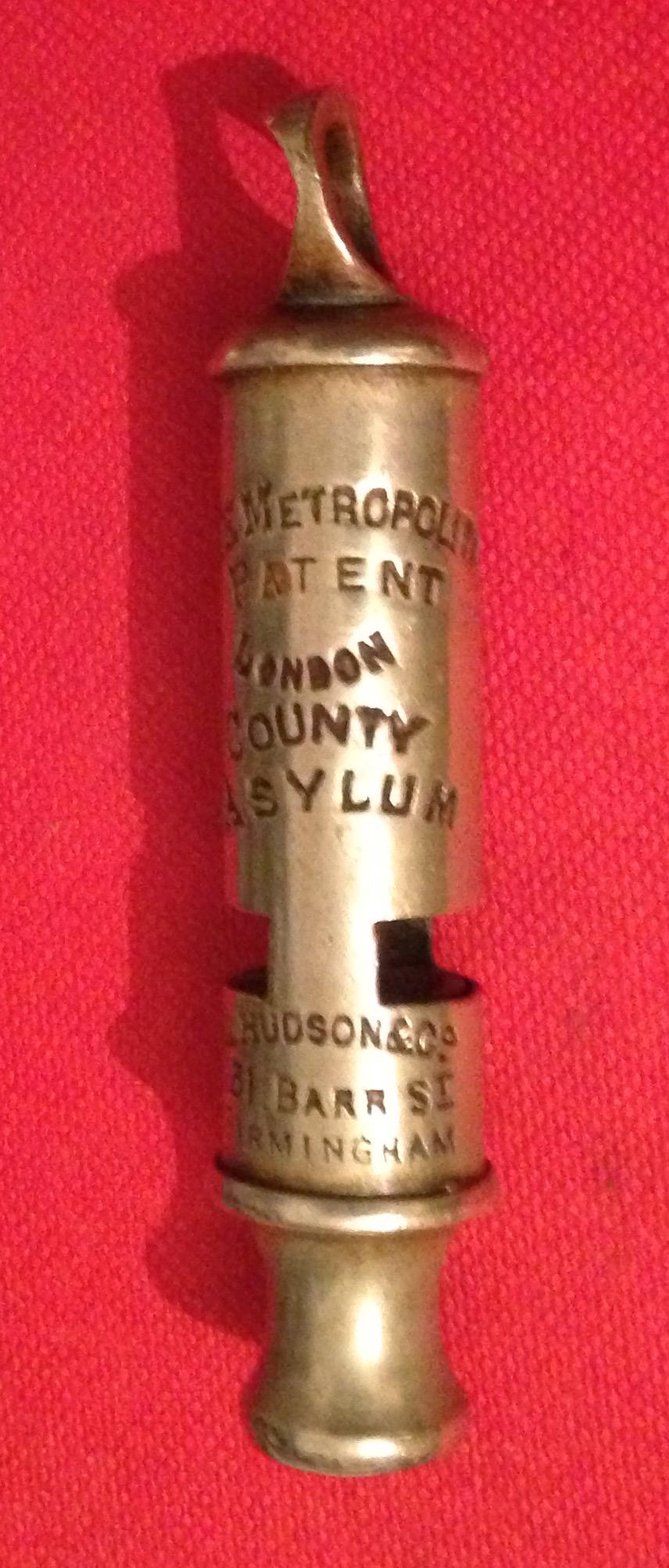


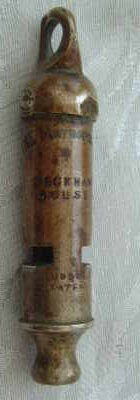
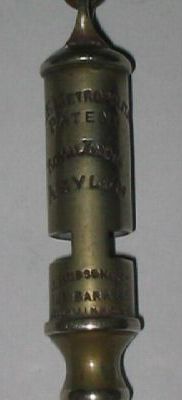


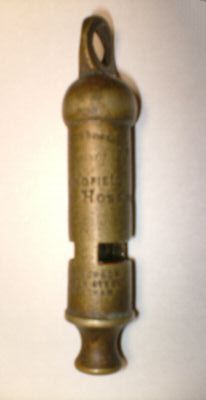
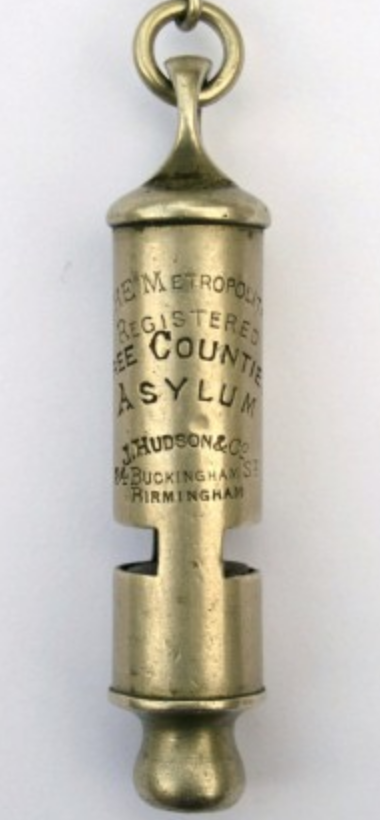
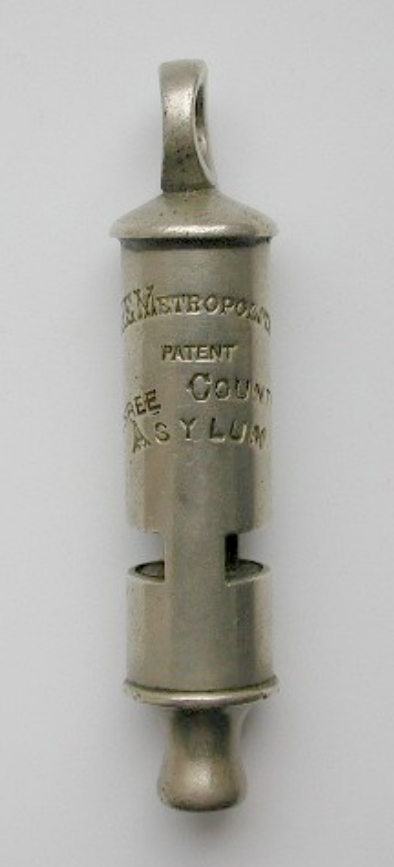


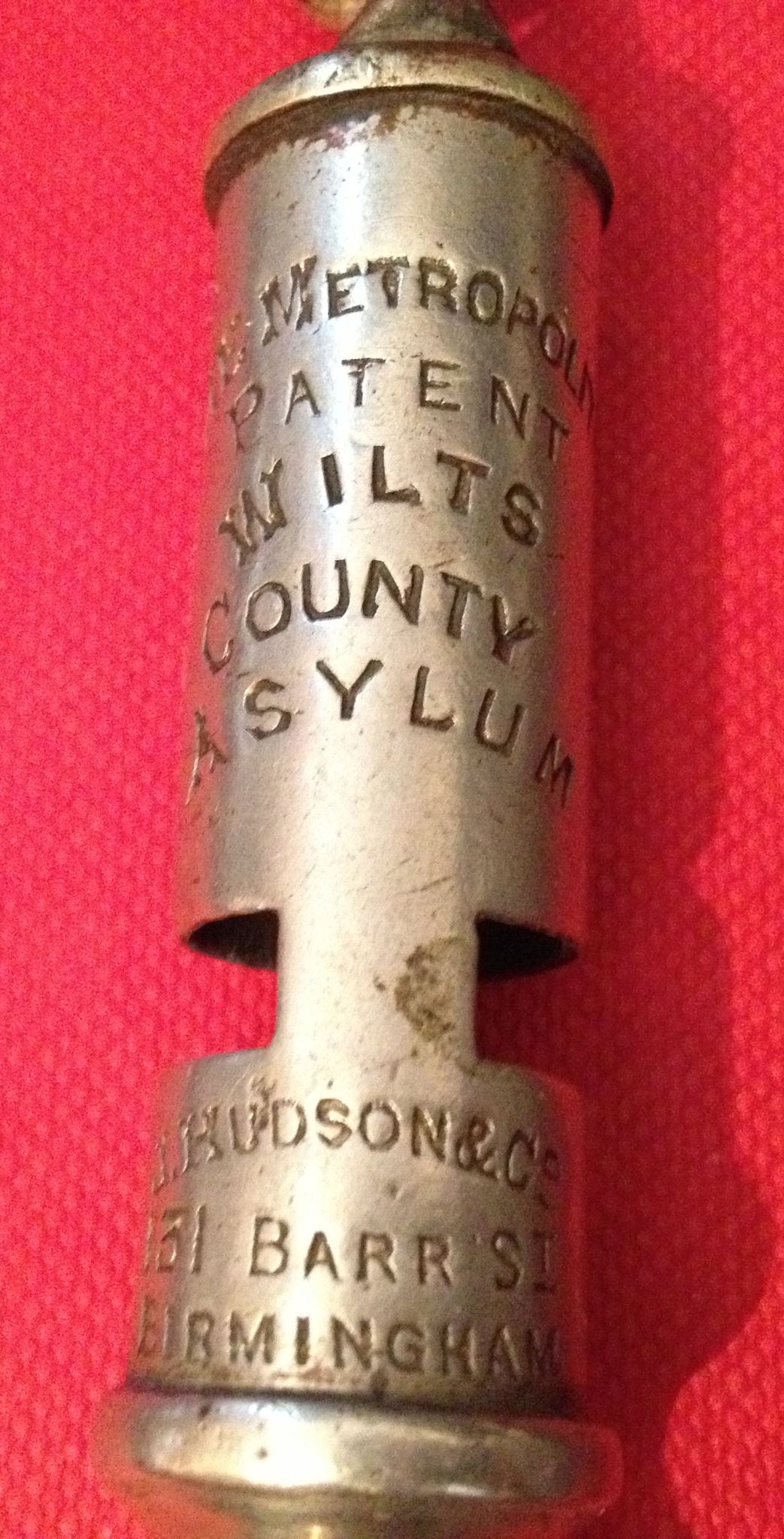

Acknowledgements:
With gratitude to Mark Leach and Leif Bailey for permission of their many photographs from over the years. Several pictures need credit gathered over as many years.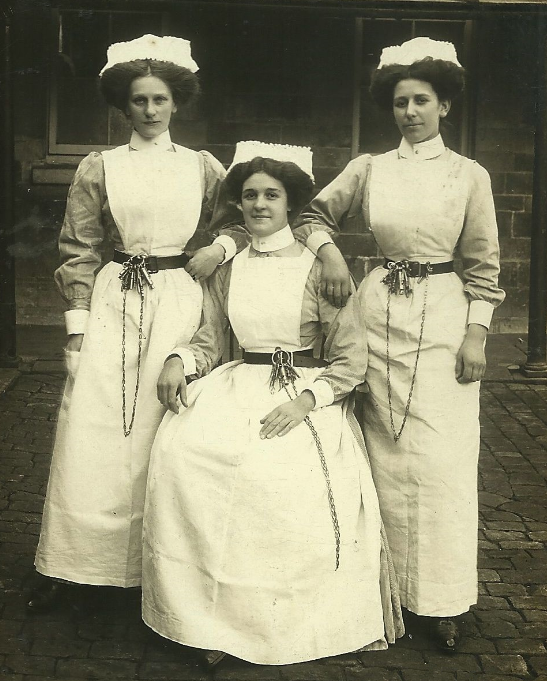
Conclusions:
Although originally used for emergencies, the collecting of Asylum whistles may be more of a fascination rather than pride of provenance. Most whistles are rather generic, save the Hiatt patent. As clones of the metropolitan stamped police, fire brigade, prison etc. in the end merely stamp variations.
TWG
Posted June 5, 2021
Bibliography:
* https://ezitis.myzen.co.uk/springfield.html Lost Hospitals of London
** https://www.nationalarchives.gov.uk/hospitalrecords/details.asp?id=206 National archives
http://studymore.org.uk/4_13_TA.HTM Index of English and Welsh Lunatic Asylums and Mental Hospitals
Brentry hospital, founded in 1898 as the Brentry Certified Inebriate Reformatory.
In 1922 it became an institution for the mentally ill, and was renamed Brentry Certified Institution. It was renamed the Brentry Colony in 1930. In 1948, under the National Health Service, it became Brentry Hospital. It closed in 2000.
